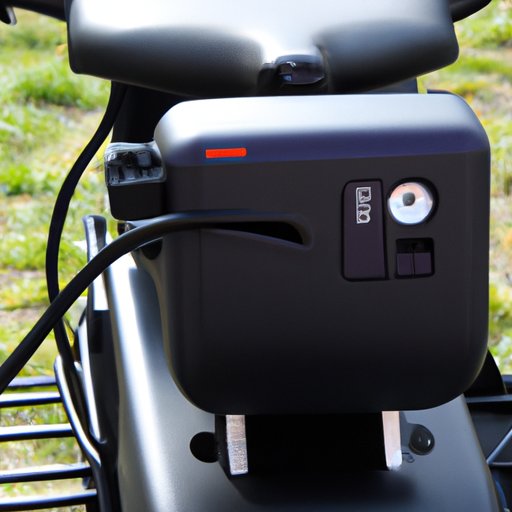Introduction
An electric bike, or e-bike, is a bicycle with an integrated electric motor that can be used for propulsion. E-bikes are growing in popularity as they offer riders the ability to enjoy cycling while reducing the physical effort required. But do you have to pedal an electric bike? In this article, we explore the benefits and challenges of riding an electric bike without pedaling.
How an Electric Bike Works and Why You Don’t Have to Pedal
Electric bikes typically include a battery and motor system. The battery powers the motor, which helps propel the bike forward. The motor is usually activated by either a pedal-assist system or a throttle control. A pedal-assist system senses when you are pedaling and automatically adds power to your ride. A throttle-controlled system allows you to control the speed of the bike without having to pedal. This means you don’t have to pedal an electric bike if you don’t want to.
The benefits of not having to pedal an electric bike include increased efficiency for longer rides, reduced stress on joints and muscles, and easy accessibility for all skill levels. By relying on the motor, you can travel farther and faster than you would on a regular bike. This makes it easier to explore new areas and even commute to work.
Exploring the Benefits of Riding an Electric Bike Without Pedaling
Riding an electric bike without pedaling offers several advantages. First, it is accessible to riders of all skill levels. Even those who are less experienced or unable to pedal due to physical limitations can enjoy the experience of riding an e-bike. Additionally, electric bikes are more efficient than traditional bikes, allowing riders to cover more ground in less time. This makes them ideal for commuting or exploring long distances.
Riding an electric bike without pedaling also offers health benefits. It reduces strain on the joints and muscles, making it more comfortable and enjoyable. This makes it easier to ride for extended periods of time.
Understanding the Difference Between a Pedal-Assist Electric Bike and a Throttle-Controlled Electric Bike
Pedal-assist electric bikes are equipped with a sensor that detects when you are pedaling and automatically adds power to your ride. This type of electric bike requires you to pedal in order to activate the motor and move forward. Throttle-controlled electric bikes, on the other hand, allow you to control the speed of the bike without having to pedal. This type of electric bike does not require you to pedal in order to move forward.

Examining the Pros and Cons of Riding an Electric Bike Without Pedaling
Riding an electric bike without pedaling has both pros and cons. On the plus side, it is more accessible to riders of all skill levels and offers increased efficiency for longer rides. Additionally, it reduces strain on the joints and muscles, making it more comfortable and enjoyable.
On the downside, riding an electric bike without pedaling can be dangerous if not done properly. If you are not careful, you could end up going too fast or not paying attention to your surroundings. Additionally, electric bikes are more expensive than traditional bikes, so they may not be within everyone’s budget.

Tips for Maximizing Your Electric Bike Experience Without Pedaling
If you decide to ride an electric bike without pedaling, there are a few tips to keep in mind to maximize your experience:
- Invest in quality parts. Make sure you purchase an electric bike with quality components that will last. This will help ensure your safety and reduce the likelihood of breakdowns.
- Make sure you are comfortable. Make sure you adjust the seat and handlebars to fit your body and riding style.
- Monitor your speed. Pay close attention to your speed and make sure you are not going too fast for your surroundings.
- Take regular breaks. Make sure you take regular breaks to rest and recharge.
Conclusion
In conclusion, electric bikes offer riders the ability to enjoy cycling while reducing the physical effort required. While you don’t have to pedal an electric bike, there are both pros and cons to doing so. It is important to understand the differences between a pedal-assist electric bike and a throttle-controlled electric bike, and to follow safety tips such as investing in quality parts and monitoring your speed. With the right precautions and preparation, you can maximize your electric bike experience without pedaling.
Further research is needed to better understand the benefits and risks associated with riding an electric bike without pedaling. Additionally, further research could focus on the different types of electric bikes available and their respective features.


